How to Find My Irrigation Shut-Off Valve’s Location
The search for the shut-off begins


The most common irrigation shut-off valve location is near the corners of the house or main building.
Check just downstream of the backflow preventer to find the shut-off valve.
Keep in mind that it’s illegal to install underground irrigation valves without an approved backflow preventer in most residential areas.
To find the shut-off valve, probe the suspect location about six to 12 inches deep.
Typically, valves are buried mostly or completely in a valve box with a green lid.
Irrigation systems come with multiple valves to control the water flow, allowing water to reach multiple sprinkler heads in different zones throughout the yard. In addition to control valves, you’ll also find a master valve, a shut-off valve, and even a backflow preventer valve. So when you have an emergency leak, you need to cap a sprinkler head, or even when it’s time for annual winterizing, you’ll need to know how to find the irrigation shut-off valve’s location.
Finding Your Irrigation Shut-Off Valve
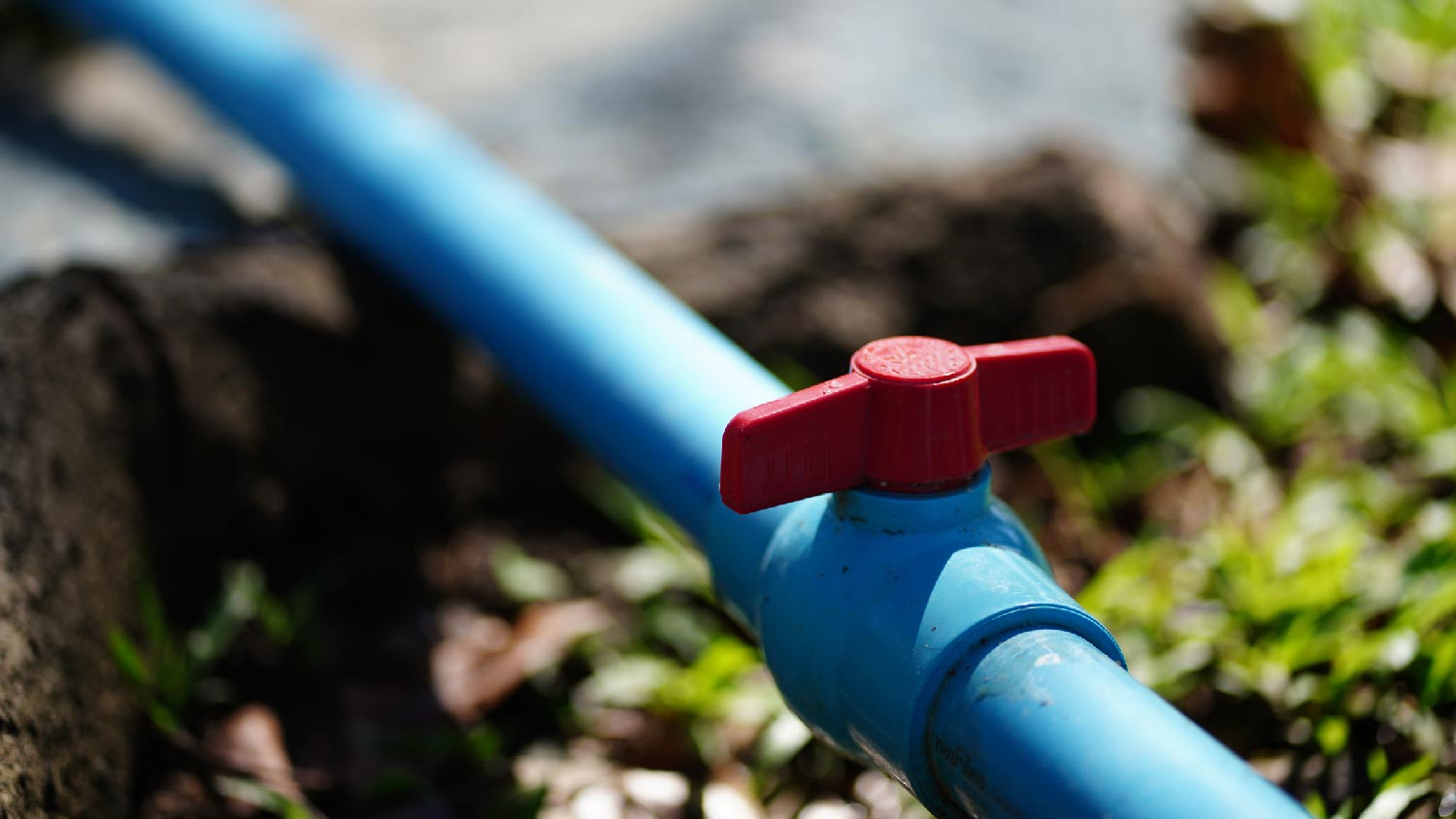
Your irrigation shut-off valve may be located above-ground or underground. No matter where the valve is located, you’ll typically find it near the backflow preventer or vacuum breaker. If you can find your backflow preventer, the shut-off valve is typically close by. To find your irrigation system valves, check:
Above-Ground
The irrigation shut-off valve might be inside your home, usually in a garage, utility closet, basement, or other storage area containing your water heater. It could also be outside in a protective box near your water source, whether that’s a well or a water meter, so check along the sides of the house and behind any plants, like large bushes or small trees. It may also be hidden away inside of a hollow, artificial rock.
Below-Ground
Most of the time, the sprinkler valves are actually buried underground rather than installed around the outside of the house. This provides more insulation against extreme temperatures. For below-ground valves, you’ll find them in what is called a valve box. This box is usually a rectangular or oval shape with a green lid that may be visible from above-ground.
If the box is fully buried, it’s usually near the water meter or well. You may want to call in a professional if you need to dig to find it in order to avoid potentially digging into any water pipes or other utility lines.
Using the Shut-Off Valve
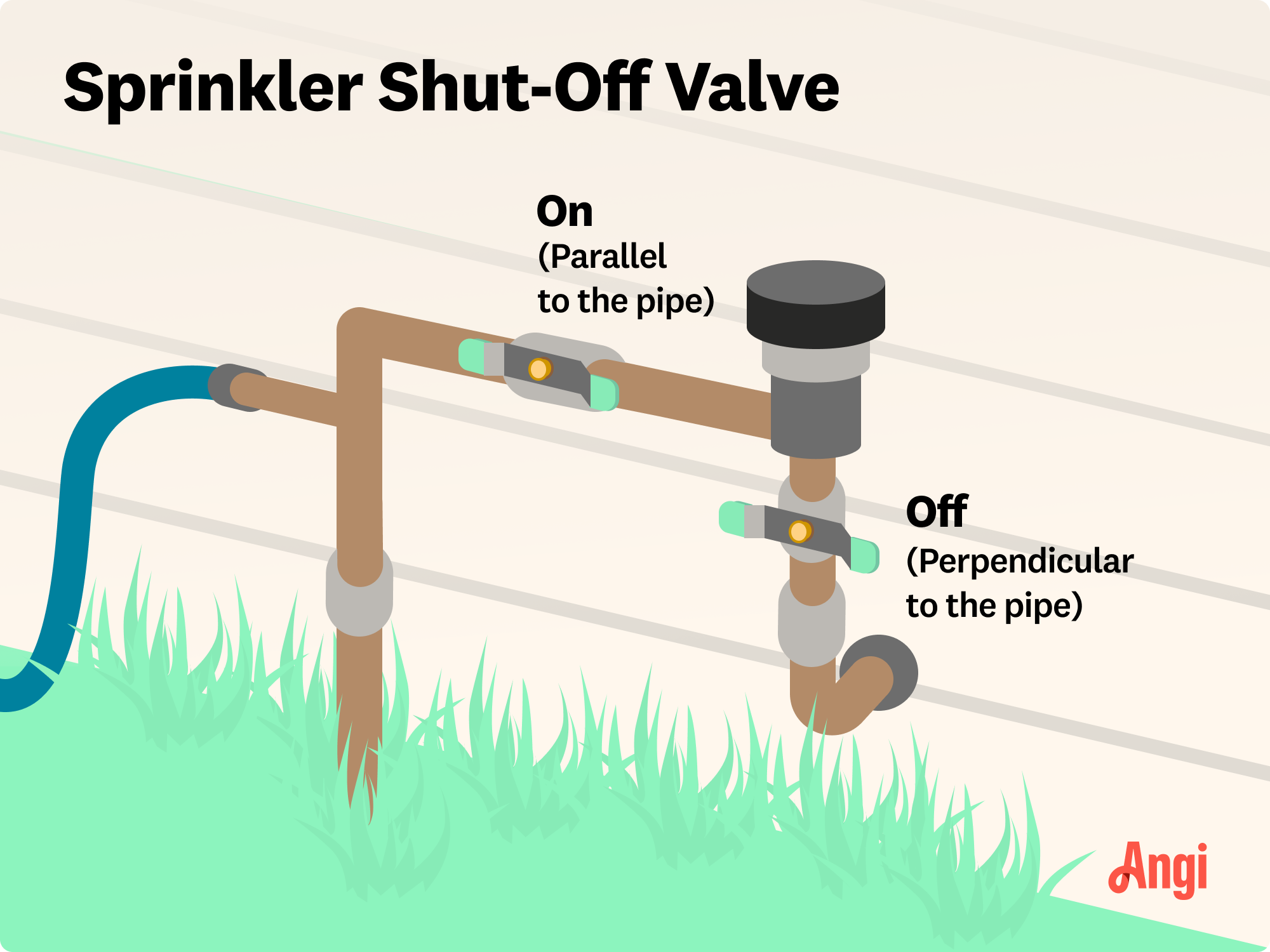
Whether above- or below-ground, the shut-off valve typically has a ball valve with a handle that looks like a lever. To turn it off, the handle should be perpendicular to the pipe. To turn it back on, you’ll turn the handle until it runs parallel to the pipe.
Reasons to Use Irrigation Shut-Off Valve
Ideally, your sprinklers will work daily to keep your lawn watered and healthy. But from time to time, a sprinkler head may become clogged with mud, or you might have a leak in one of the sprinkler lines. Before winter sets in, you may need to shut off and winterize your sprinklers to prevent frozen pipes. There are many cases in which learning the location of your shut-off valve could be valuable.
Repairs
While it’s best to leave any sprinkler repairs to the pros at a sprinkler company, you can at least shut off the water to prevent a smaller leak or other problem from becoming a bigger mess. For some repairs, like capping a sprinkler head or changing sprinkler heads, you may be able to DIY, but only if you can locate the shut-off valve first.
Winterizing Sprinklers
In the fall, you’ll want to start the process of winterizing your sprinklers and outdoor faucets. This process helps drain all of the water in the outdoor pipes and insulate any exposed fixtures to prevent frozen and burst pipes when temperatures plummet. If you plan to save some money and winterize your sprinklers yourself, you’ll need to know how to shut off the water to your irrigation system via the shut-off valve.
Of course, if you need help with winterizing your sprinklers or even just locating the irrigation shut-off valve location, you can hire a local sprinkler blowout company to help you out before the first frost of winter arrives.
Emergency Shut-Off
When a sprinkler head, an outdoor faucet, or a water line starts leaking in your yard, you need to cut the water flowing through your irrigation system as soon as possible to prevent flooding. That’s why it’s best to brush up on your knowledge of your irrigation system’s shut-off valve location so that you know exactly where to go when something goes awry.
Don't neglect your sprinkler system maintenance, such as annual cleanings and inspections. These upkeep tasks can help prevent costly issues like clogged pumps and leaking pipes.
What to Do If You Can’t Find the Irrigation Shut-Off Valve Location
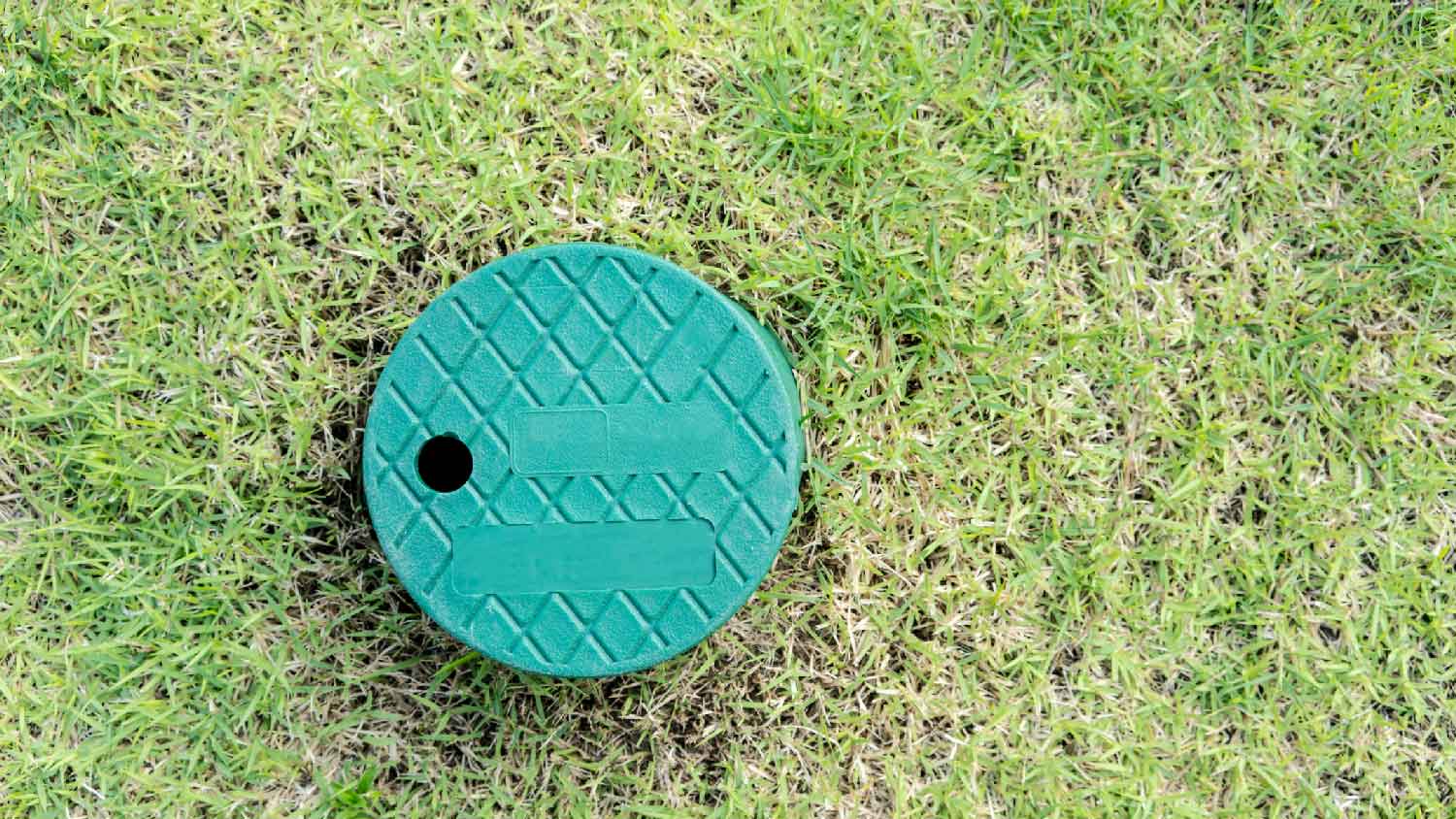
On some properties, the valve box may be glaringly obvious and easy to find. But that’s not always the case. Luckily, there are some tips and tricks to uncovering a well-disguised irrigation shut-off valve.
Note that if you’re dealing with an emergency and need to find the shut-off valve ASAP, it’s better to call a plumber or sprinkler specialist who offers emergency or off-hours visits. However, if time is on your side, you can track down the irrigation shut-off valve in several different ways:
Look for the Valve Box
Many irrigation systems keep the valves protected inside the valve box. Search around your yard, especially near your home’s water source, for a bright green lid. Removing this lid should reveal the irrigation shut-off valve.
Check the Sprinkler Documentation
When you hire sprinkler installers, they’ll usually provide you with documentation of the layout for the sprinkler system. This can give you more insight into where the different sprinkler zones are in your yard as well as where to find important irrigation system parts, like the controller and the valve box.
Contact the Permit Holder
Sprinkler installation often requires a permit, so contact your local department in charge of building planning and ask for the planning blueprint for the irrigation system at your address. You can then check the blueprints to locate the shut-off valve.
Follow the System Wires
Your sprinkler system has a controller so that you can program the timers for the sprinkler heads to water and stop watering the lawn. These wires need to connect to the solenoids on the control valves. Head to your controller, then follow the cable containing the wires connected to the valves. Eventually, this cable should lead you to the valve box.
Call a Pro
You’ve lapped around the perimeter of your house and inspected the utility closet from top to bottom, but you still can’t find that sneaky irrigation shut-off valve’s location. Don’t waste any more time in your search; instead, call in a sprinkler repair specialist near you to help. A pro can quickly find the shut-off valve and get started on any necessary repairs.
What Is an Irrigation Shut-Off Valve?
Your irrigation system has multiple valves, but the irrigation shut-off valve is the valve controlling the water supply to the entire irrigation system. It’s important to know what the shut-off valve is as well as the irrigation shut-off valve’s location any time you need to make repairs.
This valve is different from the main water shut-off valve, which controls the water supply to the entire home. The irrigation system’s shut-off valve is also different from the master valve part of a sprinkler system, which is a safety valve that automatically stops water from flowing through the irrigation system when it detects a problem, such as a leak.
The shut-off valve differs from the control valves, too. The sprinkler control valves open to allow water to flow through to the sprinkler heads and close when the timer shuts off and it’s time to stop watering the lawn.
Frequently Asked Questions
Yes, all irrigation systems have a shut-off valve. Yours may be located in a box underground close to your water meter, inside a basement, in a crawl space, or in a utility closet. If your system is leaking, use this valve to stop the water supply to your sprinklers and call a pro for repairs.
The main shut-off valve for a sprinkler system is simply called the shut-off valve. It’s one of several valves for a sprinkler system, and it controls the water supply to the sprinkler system’s water lines. This valve is different from the master valve, which can also shut off the water supply in case of an emergency but operates automatically.
To shut off your irrigation water for winter, you’ll want to turn off the main shut-off valve for your irrigation system. But the winterization process doesn’t stop there. You’ll also need to blow out the sprinklers and drain the outdoor faucets to prevent any excess water from freezing in the pipes.
To turn off the power to your sprinkler system, head to the controller. The controller, also called the timer, is where you program the schedule for your sprinklers to water and stop watering the lawn. You can turn the sprinklers off via this controller, usually by selecting a power button or “rain mode.”

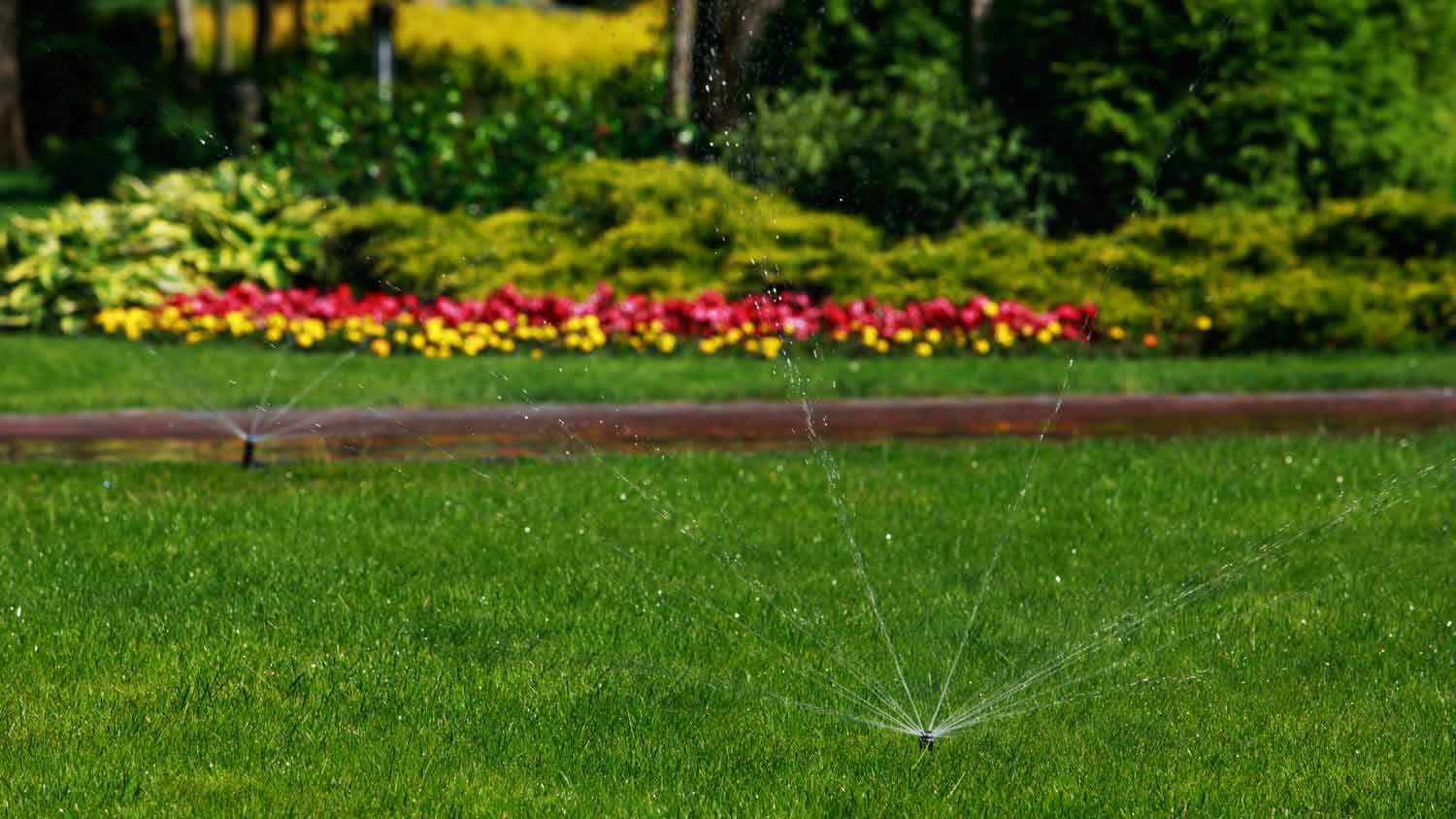

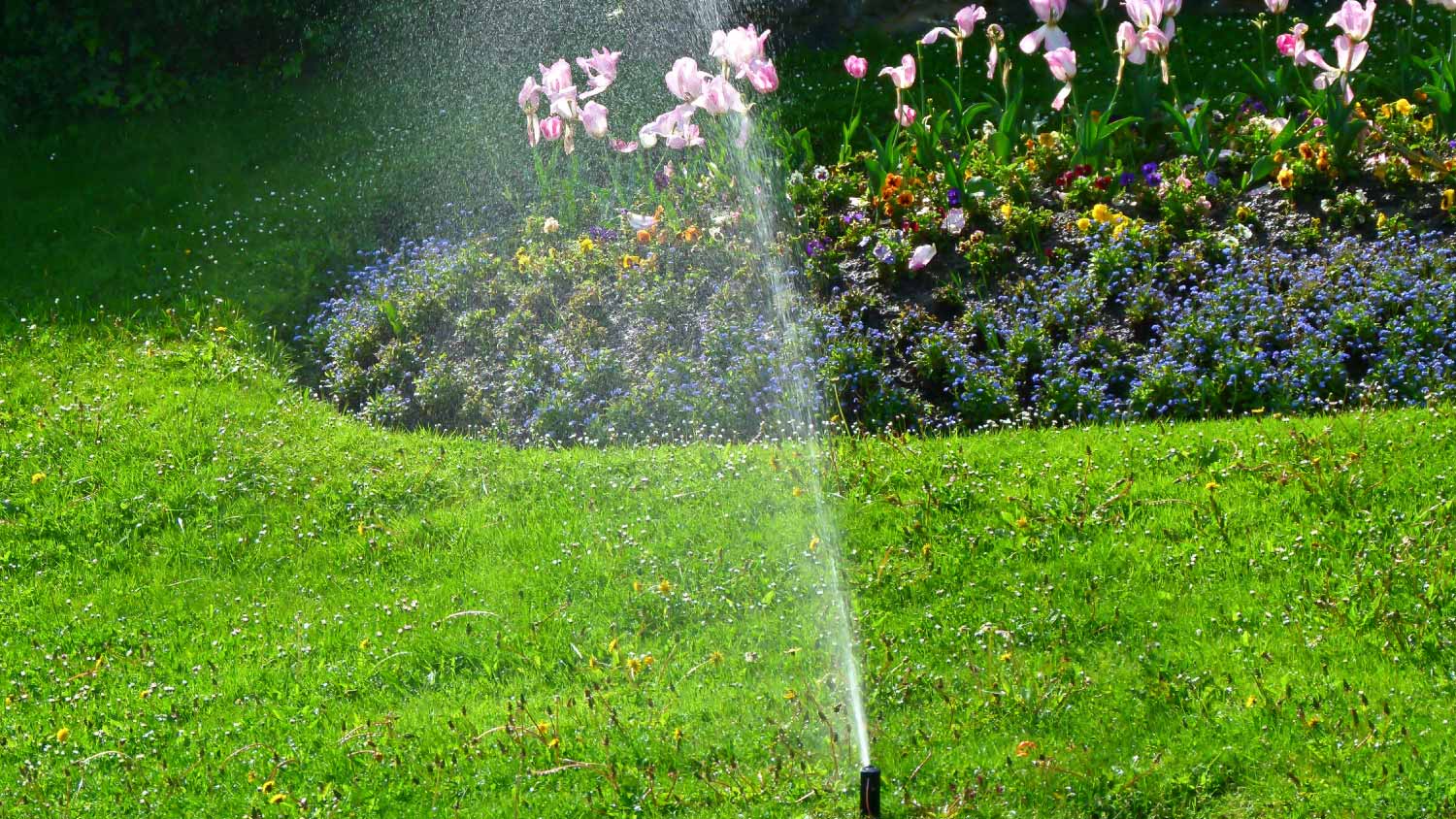

- How to Find Irrigation Valves When It’s Time for Maintenance
- How Do Irrigation Valves Work? Everything You Need to Know
- What to Do If Your Sprinklers Won't Turn Off
- How to Replace a Sprinkler Valve and When You May Need To
- How to Clean a Sprinkler Valve: Step-by-Step Instructions
- How Irrigation Systems Work to Make Sure Your Lawn Is Happy and Healthy
- How Does a Sprinkler Valve Work? Understanding Your Irrigation System
- Sprinklers 101: The Key Parts of the Sprinkler System
- Sprinkler Water Valve Is Leaking: Common Causes and Signs
- How Long Do Sprinkler Valves Last? Average Life Span and Impacting Factors











